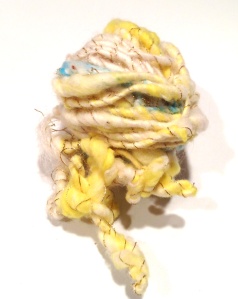 What a perfect month it is to start talking about hand spinning cotton! After a very long and cold winter, I’m definitely in the mood to work with fibers that are lighter and cooler.
What a perfect month it is to start talking about hand spinning cotton! After a very long and cold winter, I’m definitely in the mood to work with fibers that are lighter and cooler.
But, one thing that has intrigued me for a long time is working with cotton in a non-traditional way. And this goes back a few years to when I was taking a two day cotton spinning class with a very well known teacher who specializes in cotton spinning. I showed up with my beautiful wheel that is perfect for spinning the types of textured, artistic yarns I prefer only to find that the ratios on my set up were not going to work for the class. I tried the wheel for awhile that day and struggled to produce beautiful thin yarns using the long draw method of drafting the fiber. Half way through the day, I was switched over to a loaner wheel with higher ratios. Oh, the joy of getting adjusted to a wheel that you are not used to while trying to learn something new! Nonetheless, the higher ratios of course worked out better.
On the second day, while there was a little time, I started “goofing off” and doing the types of things I normally do when I spin. I took some of the overtwisted, unevenly drafted yarns from the previous day and made some coiled yarns. Both the teacher and the other students were keenly interested and I thought, “hmmm…this is worth exploring.” I made my way through the rest of the class, following the directions and producing the types of yarns we were instructed to produce, but of course, my mind had bookmarked to come back to using cotton in a non-traditional way.
Now, in coming back to this idea, I’ve been doing some free form weaving recently and one of the things that is really nice to have available is small yardages in interesting textures. I revisited my classroom clowning and have been working with core spinning cotton.
There are some very nice aspects to working with cotton. Consider the following:
- It doesn’t felt. Dyeing cotton is relaxing because there is no worrying about “manhandling it” and ending up with a felted mess.
- It allows for a different type of manipulation when handling the fibers.
- It’s naturally next-to-skin soft.
- Allergy issues are much less likely with cotton.
- It’s vegan!
For this blog post about cotton, I’m going talk about a bulky cotton yarn I spun recently. Yes, I said “bulky”. While we tend to spin thin cotton yarns, and they are lovely, I’m going to offer you an option to mix things up.
Here are my materials which included some cotton punis I made, commercial mohair yarn, and gold thread. I selected each material for the following reasons:
- Some punis – since the punis already have a little bit of twist, I knew I could pull the fiber from the end and easily draft onto my core.
- Commercial mohair – I like to core spin with this material. It grabs fiber well and is light and strong.
- Gold thread – AKA “the evil gold thread” – this is fussy and temperamental in nature but it looks really good. This thread is almost like a fine grade wire so it adds some stability as well as a touch of flash. Since I was using light and natural colors, I wanted to add a little something extra.
To make the corespun single: I tied on my core and auto wrap as you normally would and started spinning a little then started drafting off of the puni, gently and a little bit at a time and let it encase my core. (if you are new to core spinning, auto wrapping or navajo plying, check out the videos on my website, www.spinartiste.com). Doing this with cotton is not a lot different than working with wool. You have to watch it a bit more closely because the staple is short and if you don’t draft carefully, you will have puffs and bald patches!
For the auto wrapping, again, you won’t need to make any special adjustments. I set my cone of thread (it comes off better from the cone) between myself and the wheel to the left of my left knee. If you want your autowrap (as I do) to look like it’s sort of lazily looping along your yarn and not a tight barber poled angle, you need to get the wrap source in front of your hands and rather close to the wheel.
The resulting single was somewhat overtwisted which is what is needed for the next step.
For the Chain or Navajo ply: After removing the single bobbin off the wheel, I popped on a fresh bobbin, tied on my single and began to chain ply in the opposite direction in which I spun my single. When performing this technique, personally, I like to go slowly so that I can work with and control the twist. Also, you have to be conscious of how big you are making the loops that you are chaining through because each time you create a loop, you will have a little hump there which takes away from the three ply look you will get from this technique.
Finished yarn: My resulting yarn is bulky and balanced and has a fun and pretty texture and look.
While I created the yarn with the intention of weaving it into a project, I could not resist getting out a large crochet hook because this type of yarn looks so fantastic crocheted.
So, there you have it! Not only a bulky cotton yarn but a cotton yarn that does not require long draw practice!!
 Arlene Thayer combines her passion for fiber and love of writing as the Publisher of www.spinartiste.com and Chief Co-Creator at www.fiberygoodness.com. As an artist, Arlene is very attracted to color and texture and prefers things on the funky side: bold, bright, and wild. At the same time, Arlene has a deep respect and fascination for tradition and traditional methods. She lives in beautiful south central Pennsylvania with her beloved husband and Maine Coon cat…and a lot of fiber!
Arlene Thayer combines her passion for fiber and love of writing as the Publisher of www.spinartiste.com and Chief Co-Creator at www.fiberygoodness.com. As an artist, Arlene is very attracted to color and texture and prefers things on the funky side: bold, bright, and wild. At the same time, Arlene has a deep respect and fascination for tradition and traditional methods. She lives in beautiful south central Pennsylvania with her beloved husband and Maine Coon cat…and a lot of fiber!

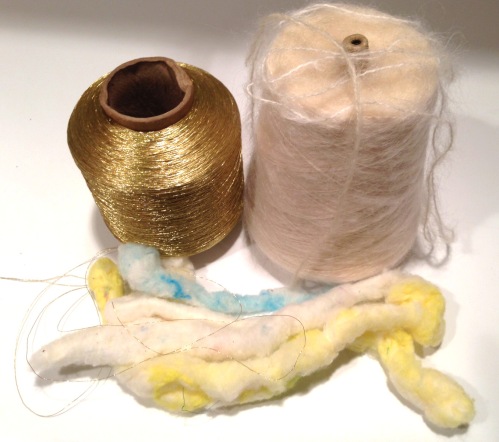
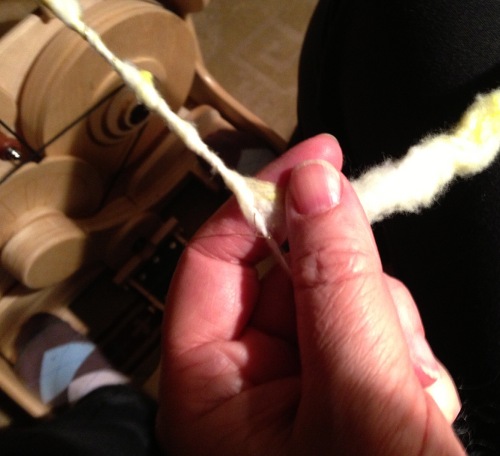
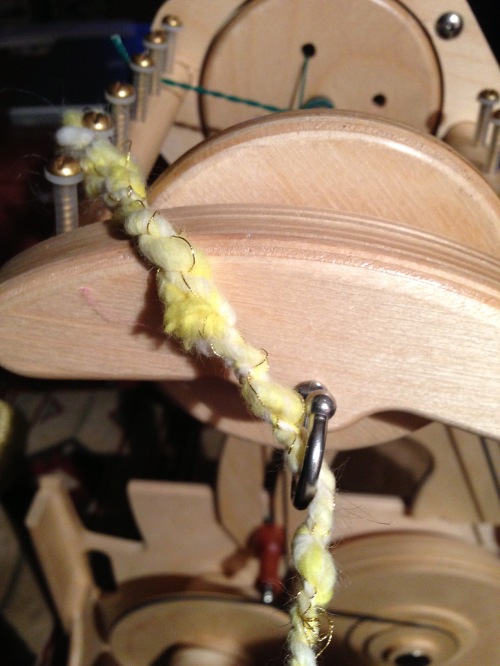
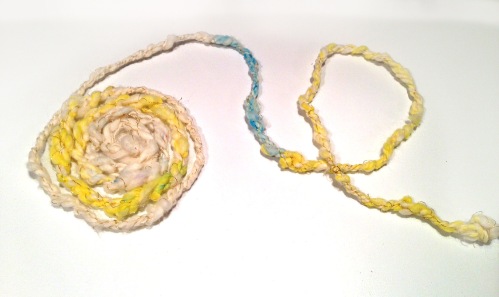
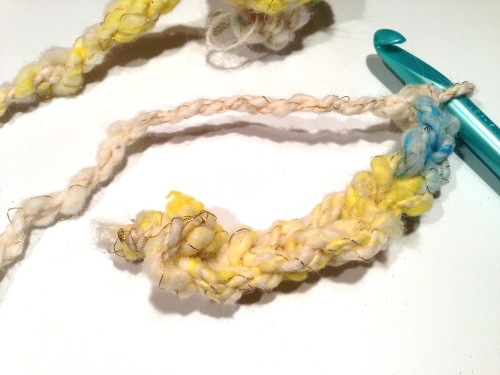


I love what you have created with cotton Arlene. Who’d have thought….!
Hmm cotton. Not ready to go there yet but soon, soon I think I can see it on the horizon!
Really fun post! I tried a bit of cotton spinning where we mixed silk noil in with hand cards. It was a blast!
Pingback: Exploring Non-Wool Fibers | thewooleryguy